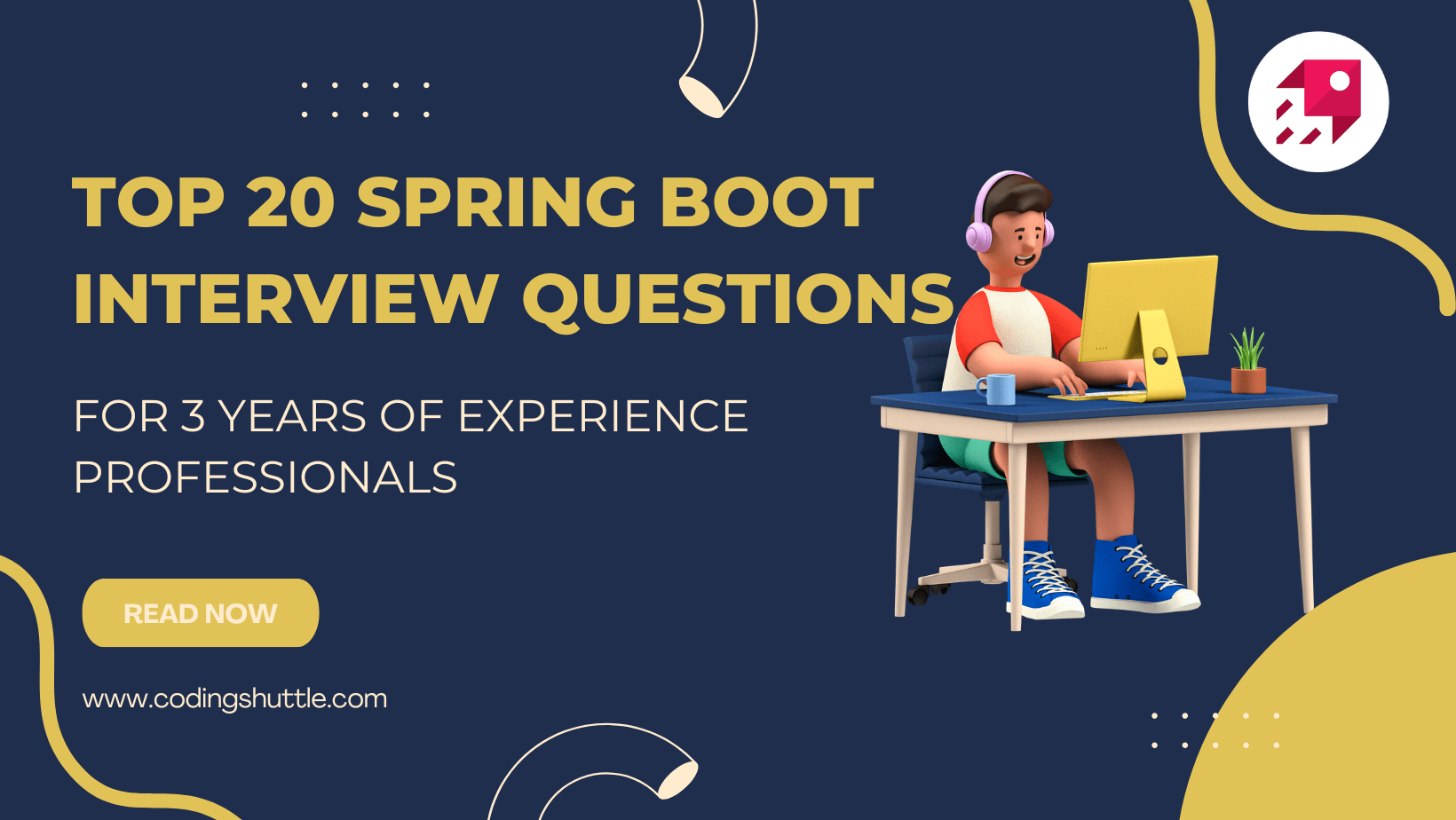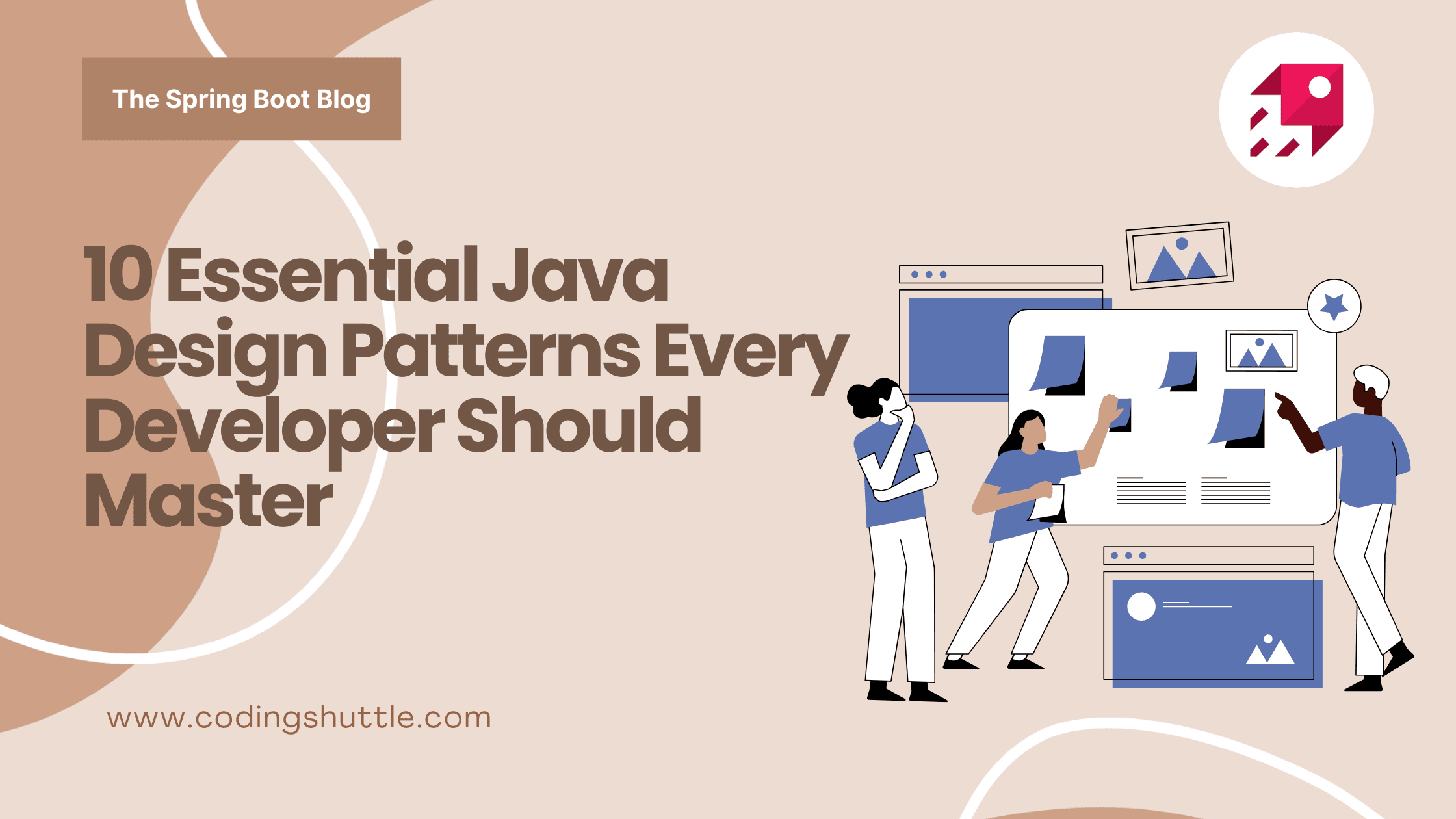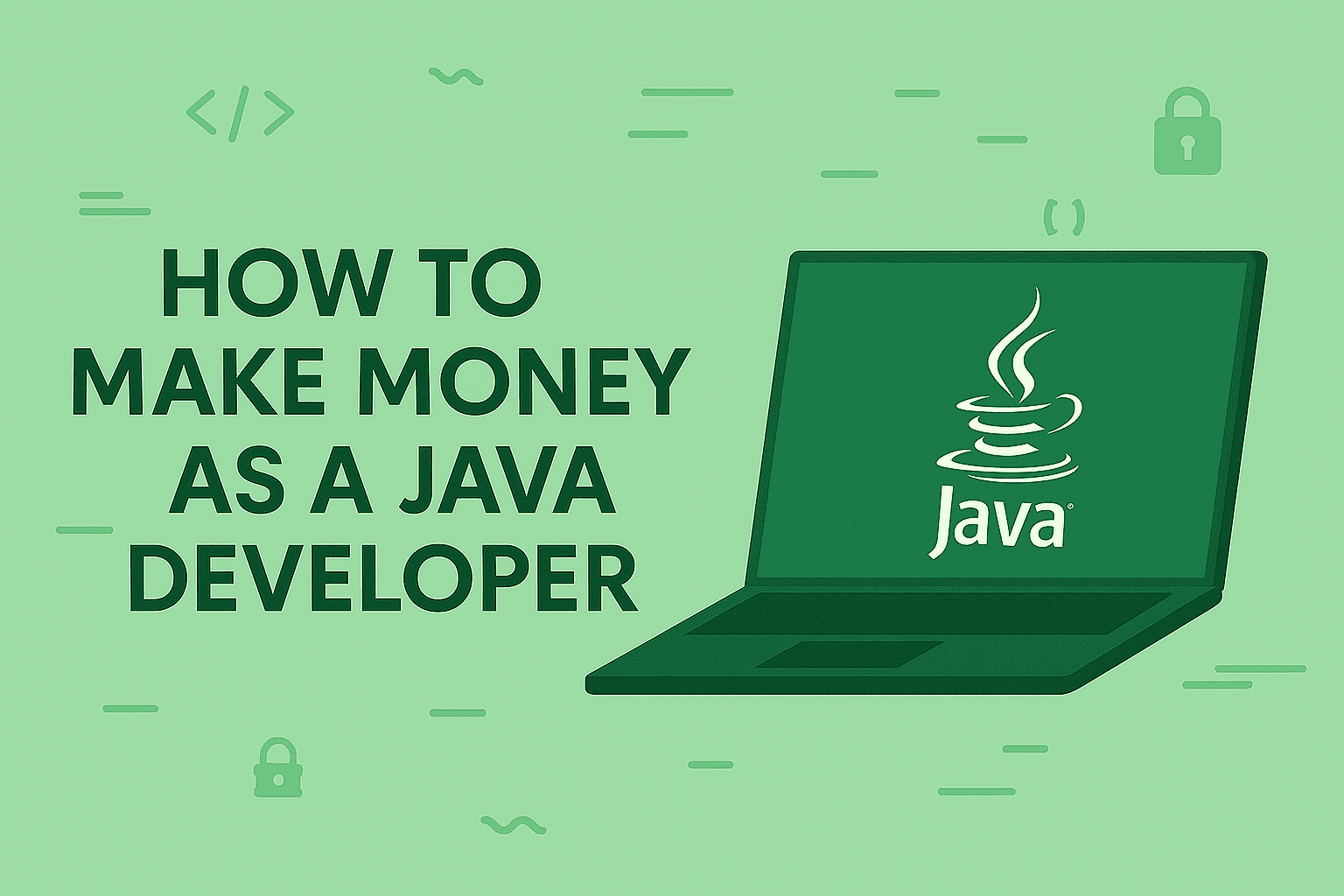
How I would learn Spring Boot if I could start over
After 8 years of rigorous training and spending over 6000 hours learning and mastering Spring Boot, I have figured out the best way to master this tech.
Anuj Kumar Sharma
August 12, 2025
7 min read
I’ve spent the last five years of my life mastering advanced Spring Boot and over 10 years living and breathing Java. In that time, I have closely watched the tech industry in India—especially how companies hire for Java roles—and one thing is clear: Spring Boot has a clear advantage.
It’s the go-to framework for many enterprises building web apps and microservices. And the demand is only growing. Freshers can land roles paying ₹5–12 LPA, and with experience, that number can easily cross ₹18 LPA. Through my courses, I’ve trained thousands of students on Spring Boot. Along the way, I’ve seen where beginners get stuck, what concepts they overlook, and which skills make the biggest difference in cracking interviews.
So in this blog, I’m going to share exactly how I’d learn Spring Boot if I were starting today.
Phase 1: Master Java Foundations (2–3 weeks, 15–20 hrs/week)#
I would focus on building a strong foundation first. Having a solid grasp of Java’s OOP principles before rushing into Spring Boot ensures you can easily understand its abstractions.
Core Fundamentals
- Object-Oriented Programming: Classes, inheritance, polymorphism, encapsulation.
- Collections: Lists, Maps, Sets, Queue implementations.
- Exception Handling: Try-catch, custom exceptions.
- Lambdas & Streams: Functional programming for modern APIs.
- Multithreading Basics: Understanding concurrency for web applications.
Extra Mile
- LeetCode or HackerRank: Solve 50 Easy → 50 Medium → 20 Hard Java problems focusing on algorithms that are relevant for backend development. [Check out the DSA Prime Course to Master DSA in Java]
- Multithreading concepts with Java Executor Framework
- Using Virtual Threads in your Spring Boot Apps
Java has a strong market demand and used broadly in fintech, banking, telecom, and government sectors due to its performance and reliability. Senior Developers with good Java knowledge make over Rs. 40 LPA. But it takes a good understanding of Java to crack those interviews.
Phase 2: Spring Core Fundamentals (1-2 weeks)#
Spring Boot does a lot of configurations automatically for you; however, it’s important to fully understand Spring first, only then will you be able to fully understand and appreciate Spring Boot. Also, these concepts are the most widely asked questions in the Spring Boot interviews.
Essential Concepts
- Inversion of Control (IoC), Dependency Injection.
- Bean Lifecycle & Scopes.
- Application Context and Spring Container.
- AOP (Aspect Oriented Programming) basics.
Maven Proficiency
- Master POM structure and version management.
- Build profiles for dev/staging/prod.
Extra Mile
- Write a small library and publish it to Maven Central.
- Create multiple profiles in a single project (dev/prod) and switch between them with
-spring.profiles.active.
Spring Core knowledge pairs well with container technologies and cloud adoption, which are growing priorities across India's IT sector. Having a solid understanding of the Spring Core is important to crack Spring Boot Interviews.
Phase 3: Spring Boot Fundamentals (2–3 weeks)#
Once you know Spring Core, diving into Spring Boot becomes far easier. This is where you’ll see how Spring Boot takes care of tedious setup so you can focus on business logic. Many production projects expect developers to be fluent in these fundamentals from day one.
Core Features
- Spring Initializr & project setup.
- @SpringBootApplication & auto-configuration.
- Starter dependencies & embedded servers (Tomcat/Jetty/Undertow).
Deep Dive
- Conditional annotations like
@ConditionalOnProperty,@ConditionaOnMissingBean - Internal startup sequence of Spring Boot apps.
Extra Mile
- Create your own custom Spring Boot starter module.
- Study the Spring Boot GitHub source code to understand how AutoConfiguration works internally.
- Benchmark startup time difference between lazy initialization vs default.
Spring Boot powers critical APIs and services at Netflix, Amazon, PayPal, and many Indian startups like Swiggy, MagicPin, Cred, etc. favouring rapid, scalable development with production-ready defaults. But it all starts with the basics.
Phase 4: REST APIs & Data Management (3–4 weeks)#
After mastering app structure, it’s time to create meaningful outputs — APIs that interact with the real world. Here, you’ll learn how to build RESTful endpoints, handle inputs/outputs, secure them, and connect them to databases using Spring Data JPA.
RESTful Concepts
- CRUD with Spring MVC annotations.
- Input validation, pagination, and projections.
- Controller advice for exception handling.
Spring Data JPA
- JPA entity relationships (OneToOne, OneToMany, ManyToMany).
- Query Optimisation
- Hibernate and EntityManager
- Transactional propagation and Persistence Context
Extra Mile
- Implement a full-featured API with validation, error handling, and Swagger Docs.
- Optimize JPA queries to avoid N+1 problems; analyze queries with Hibernate Statistics.
- Flyway for DB migrations.
- Build projects using different databases like MongoDB, MySQL, Neo4j, etc.
Focus on building scalable APIs while keeping ACID compliance in mind. Interviewers love to ask questions around concurrent transaction management and database query optimisation.
Phase 5: Security & Testing (3–4 weeks)#
In the real world, APIs often hold sensitive user data and business-critical processes, so you must know authentication, authorization, and secure coding. At the same time, testing ensures your code works reliably even as it evolves. Learning these together forms the habit of writing safe and stable applications right from the start.
Security
- JWT, OAuth2, and role-based access control.
- CSRF & CORS handling.
- Method-level security.
Testing
- Unit testing (JUnit, Mockito).
- Integration testing with MockMvc and Testcontainers.
- Analyse test coverage with libraries like Jacoco.
Extra Mile
- Write security tests that attempt unauthorized access and verify correct rejection.
- Implement auditing with Spring Data (createdBy, modifiedBy fields).
- Integrate your tests into a CI/CD pipeline with GitHub Actions.
One thing beginners often skip is testing—but it’s super important. It’s not just about finding bugs; it shows you’re a serious, detail-oriented developer. Most companies expect 80%+ test coverage using tools like JUnit and Mockito, and in many places, automated tests hooked into CI/CD pipelines are standard practice.
Phase 6: Production-Ready Features (2–3 weeks)#
Once your app works, making it production-ready is the next milestone. Companies hiring senior Spring Boot developers expect knowledge of deployment-level stability measures, so understanding these early will make you more valuable as a developer.
Monitoring & Observability
- Spring Boot Actuator, custom health checks.
- Structured logging & auditing.
- Tracing with Zipkin or OpenTelemetry
- Enable Prometheus + Grafana dashboards for live monitoring.
Performance Optimization
- Caching with Redis.
- JVM and DB tuning.
Extra Mile
- Deploy your app to a cloud platform (AWS/Azure/GCP)
- Set up centralized logging with ELK stack (Elasticsearch, Logstash, Kibana)
- Service mesh & observability to manage complexity.
Observability is crucial for industry-grade applications. Companies deploy Spring Boot Actuator metrics integrated with Prometheus and Grafana for real-time operational insights and using ELK stack as a standard solution for log aggregation and analysis across microservices.
Phase 7: Advanced Architecture Patterns (3–4 weeks)#
At this stage, you go beyond basic APIs to building enterprise-grade systems. This is where you learn caching strategies, real-time messaging with Kafka/RabbitMQ, and resilience patterns to ensure systems can handle failures gracefully. These skills are highly sought-after in companies dealing with high-volume, low-latency systems such as fintech, e-commerce, and streaming services.
Caching
- In-memory vs distributed caching.
- Cache invalidation strategies.
- Cacheable with Spring Boot
Messaging
- Kafka/RabbitMQ for event-driven architectures.
- Event buses: AWS EventBridge, Google Pub/Sub.
- Patterns: Event sourcing, CQRS (Command Query Responsibility Segregation).
Extra Mile
- Build a real-time notification system using Kafka + WebSockets.
- Benchmark performance with and without caching under load.
- Distributed systems foundations (CAP theorem, replication, partitioning).
- Resilience patterns like circuit breakers & bulkheads.
Kafka and RabbitMQ power event-driven architectures in finance, telecom, and e-commerce giants for asynchronous and reliable communication. Pair this with Resilience4J and Caching to build resilient and high performant Enterprise applications.
Phase 8: Microservices Architecture (4–5 weeks)#
Microservices are the backbone of modern scalable applications, and understanding them will put you on par with top-level backend engineers. Here, you’ll learn service discovery, API gateways, centralized config servers, and containerized deployments. These concepts are essential in large organizations that need to manage hundreds of services seamlessly across cloud environments.
Spring Cloud
- Eureka for service discovery.
- API Gateway routing & filtering.
- Centralized configuration server.
Containers
- Docker multi-stage builds for optimization.
- Kubernetes basic deployments.
- Deploy your services on a Kubernetes cluster (GKE, EKS)
- Containerization, Deployments and Services in k8s
Extra Mile
- Implement the Saga pattern for distributed transactions in a sample e-commerce app.
- Integrate service mesh (Istio) for observability and policy control.
- Enable Zipkin-based distributed tracing and visualize request flow.
Eureka, Consul, and Spring Cloud Gateway are widely used by BFSI and e-commerce firms for dynamic service routing. As the companies are moving towards Cloud-native adoption, the need for developers with the knowledge of distribution systems is evolving day by day.
Next step? Build Advanced Projects, Write Blogs, Make open-source contributions and keep applying for jobs. Tailor your resume with the skills you have learnt and you’ll get hired. This is how I would have learnt Spring Boot if I could start over.
As a beginner, it’ll take you 20 - 30 weeks to learn all the concepts and double this time to fully master them. Stick to this roadmap, keep building projects, and never stop learning! The technology landscape is constantly evolving, and staying current with the latest developments helps you remain competitive in the job market.
Want to Master Spring Boot and Land Your Dream Job?
Struggling with coding interviews? Learn Data Structures & Algorithms (DSA) with our expert-led course. Build strong problem-solving skills, write optimized code, and crack top tech interviews with ease
Learn more
![How To Become A Fullstack Java Developer in 2025: [Complete Roadmap and Resources] How To Become A Fullstack Java Developer in 2025: [Complete Roadmap and Resources]](https://cs-prod-assets-bucket.s3.ap-south-1.amazonaws.com/how_to_become_full_stack_developer_1201ccd725.png)



